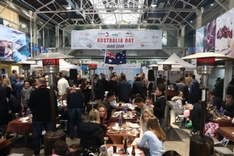Yaru Venture: Analysis for Annual ‘Shopping Festival’ 11.11 in China
Following China's biggest 'shopping festival' 11.11, Yaru Ventures has released some analysis on the top line numbers and hype around the event and the future direction of e-commerce in China.
Top line numbers:
Alibaba GMV – 540.3 bn yuan ($84.5bn USD), increase of 8.5% over last year (expected 15% increase)
JD.com GMV – 349.1 bn yuan ($54.6bn USD), increase 28.6% over last year (expected 33% increase)
Both platforms recorded increase in sales over the past year however the rate of increase slowed compared to expectation.
Trend in this year’s GMV numbers
The big domestic brands enjoyed a resurgence this year, Chinese domestic brands in fashion, food, electronics, mobile devices, and fresh products enjoyed good growth over 11.11. Well-known big international brands with a general trade presence also enjoyed growth. However, the level of discounting, promotion and marketing increase 17% overall. Platforms supported big brands with traffic and promotional events which smaller brands and new brands missed out. The overwhelming majority of GMV this year was dominated by general trade and domestic brands accounting for 85%, the rest was made up of Cross Border ecommerce brands, where more notable skincare and supplements enjoying growth, though much of it driven by heavy discounting and promotions.
There were two special themes promoted this year, a special ‘green and clean initiative’ launched to support China’s green and emission goals, this initiative included domestic and international brands that have embraced the green angle with sustainable packaging and recyclability. And a simpler ‘elders’ interface’ launched to provide easier navigation to the older of population of China. With one of the largest aging populations in the world, big tech is moving fast to address the need for older people with limited tech abilities to get re-acquainted with simpler, easy to use technology.
More subdued 11.11
This year compared to all previous years was much more subdued, there were no big events celebrating the start of 11.11, the hourly sales billboard was not displayed and the latent release of total GMV signalled a low-key approach to an event which was seen to be THE event of the year.
Issues facing brands this year
11.11 fatigue – this is the 13th year of 11.11. While it is billed as the go to event for sales in China, there is an increasing level of sales and promotion fatigue, the rule around discounting and sales are becoming more difficult to understand, for example, when 11.11 first started the discounting was easy, a straight 60% off, now the there are vouchers to collect and apply, special codes to put in, you get extra discounts if you meet a threshold, you have a store wide discount, livestreaming discount and a plethora of games and messages to get more discounts. The sales periods are also getting longer, lasting some 14 days and frequency of other promotional and sales events are dampening demand overall. Consumers are normalising and less intrigued with new ways of ‘playing’.
COVID – China has a COVID elimination policy in place. As a result, several major city and provinces has been in lockdown for several months. This has impacted the ability to deliver products into these places as well as a hit to consumer confidence with a high level of uncertainty.
Rise of livestreaming/social selling – livestreaming and social selling has been a feature in the China ecommerce landscape for some time now, however, this year it took to a new level. With the two main Chinese live-streamers (Li JiaQi and Viya) accounting for some 20bn yuan (3.12bn USD) in sales. This year also saw for the first time Douyin (Chinese Tiktok) and Kuaishou enter 11.11 with their online ecommerce offering, the rise of the new social selling has been embraced by the Chinese in recent times, with the recent growth we believe this new way of selling via these platforms will be taking more market share off JD and Alibaba
General Trade vs CBEC – over the past two years the Central Government has been encouraging the Chinese consumers to buy domestically made products. This policy is aimed at growing domestic brands to eventually become international powerhouses. This is much more evident this year as many domestic brands (established and new) surpassed new heights (Erke sports, Xiaomi, Genki Forest etc).
Recent government warnings – in a more recent warning by the government, the Chinese population was warned about the potential of electricity blackouts and the need to stock up on key essentials. This is more evident this year as rice, instant noodles, daily care products increased approximately 40% YOY. As a result, discretionary spend normalised and will continue to do so (less irrational and snap spending).
Big tech crackdown – the central government announced earlier in the year that no technology company should be behaving in a monopolistic way. Government cracked down on the two main platforms and fined Alibaba and JD for certain breaches for not allowing their customers to access each other’s platforms. Traffic and suppliers are now free to chose their platform and traffic can be shared across the board. While this has diluted some of the concentrated traffic numbers from Tmall to JD, longer term this will be a positive move that will benefit the ecosystem.
Increasing marketing and promotional costs – with both external and internal factors, the cost of marketing and promotions continue to rise. The platforms are much more cautious in allocating traffic this year given the need to generate a good return on the traffic. Digital marketing costs and more promotions were put into action, driving up costs and lowering ROI.
Future directions
While there are several issues facing the Chinese economy and the ecommerce ecosystem in the term, the longer-term view is still positive. What we are going through is a once in a decade transition brought on and hastened by some fundamental issues that has been bubbling under the surface for some time, namely, the ongoing COVID fight, the fast-moving e-commerce ecosystem moving to the next stage of change and adaption, the ongoing policies changes to move China into a more domestically focused economy and dealing with debt fuelled property market. The Chinese government is well aware of the issues facing the economy and are dealing with it in a calculated manner.
For Businesses and Brands entering or have entered in China, below are some thoughts:
- Brand building both locally (product of origin) and in China is ever more important, though cost of customer acquisition and marketing to consumers will be more expensive. We will need to more targeted and be able to invest smartly. Marketing budget and investment is crucial. (long-term frame of mind).
- Build out of the key unique points, China is often ups and down, but flexibility and robustness is important. We need to adaptive and move as needed.
- Cross border products will need to be more nimble, for those that can import into China I would suggest they look to grow that portion of the market. For brands that are not able to go offline into general trade, the need to diversify platforms (Tmall, JD, PDD, Douyin, RED etc) is important. Products will need to be unique and suitable for the China market.
- For brands that have already started their China journey, the ability to have B2C, B2B and B2B2C is useful to navigate through the landscapes. You will have a level of flexibility to outsource, partner and control parts of the business that is lagging and restructure where necessary.
- B2B distribution build out is an important part of the strategy and de-risk the direct-to-consumer business.






